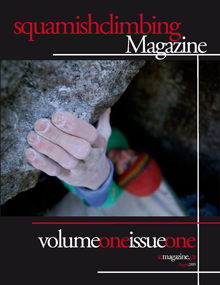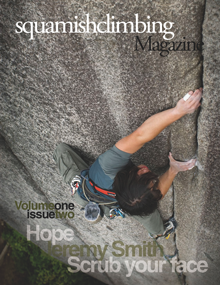Peter Croft has long been a legend in the climbing world. Originally born on Vancouver Island and then first learning how to climb in Squamish, Peter cut his teeth in Squamish during a time that was a pure adventure, free from any influence of previous generations. With his first ascents of University Wall (along with Greg Foweraker and Hamish Fraser) and The Shadow, Peter soon became a part of the climbing fabric that made Squamish history. In this interview, we dive into Peter’s origins in Squamish and what life was like in those days as well as his transition to Yosemite and how Squamish prepared him in his future pursuits. Here is what he had to say.
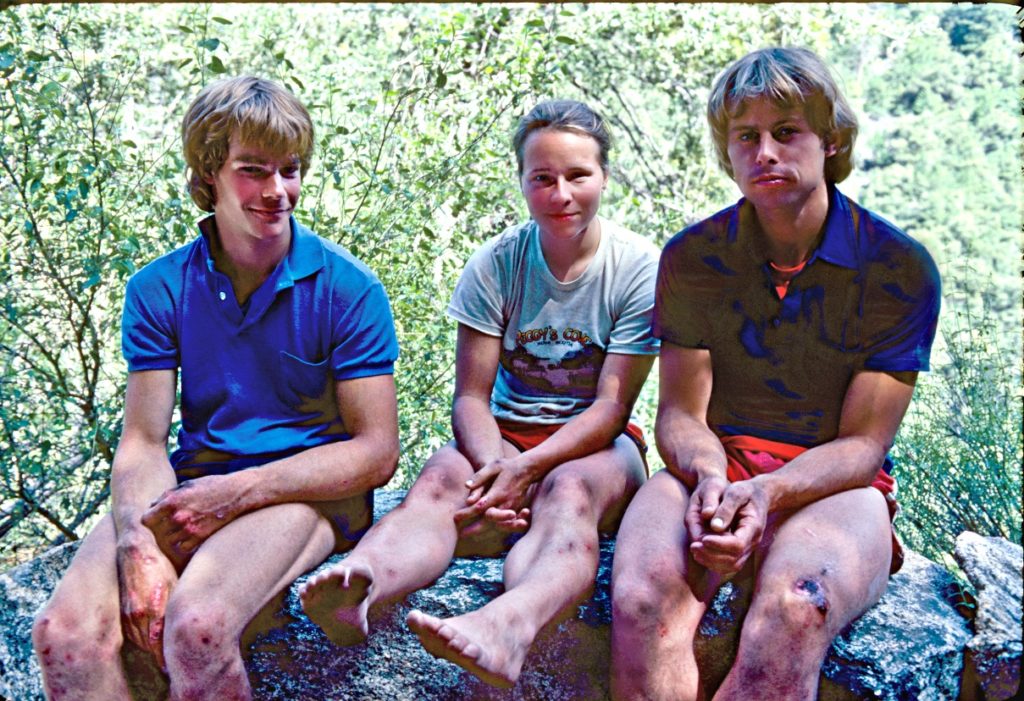
Greg Foweraker, Tami Knight and a young Peter Croft. Photo by Pat Morrow and courtesy of Peter Croft ©
Hi Peter, thanks again for talking to us. We are really looking forward to you coming to Squamish this summer!
Thanks Tim! No problem.
Because of your history with Squamish and growing up in Nanaimo, I really wanted to dive into your early days in Squamish. You were originally born in Nanaimo, BC and really cut your teeth at an early age in Squamish.
I actually grew up in Departure Bay, which was not a part of Nanaimo at that time, and what first got me interested was an article I read by Chris Bonington. There were these basalt crags at Departure bay that I would go to and started climbing with nothing but a basketball jersey and my shoes. That was the very beginning, but as soon as I could I went to Squamish. Squamish was the place to go at that time!
Was there anyone who first brought you to Squamish or acted like a role model or mentor in those early days?
No, I was a teenager when I took my first trip to Squamish and that was one of the important parts of that time, that there wasn’t any role models or mentors. All the people who had been climbing at the time in Squamish had left and there was a really small group of us that ended up going there. I first went with Richard Suddaby and met another small group of people. There was no one to get information from other than a little funky guidebook with little information.
It was a slower learning process for us but much more impactful. It was a total adventure and everything seemed just life or death and wild! I am not saying that I think that is the way everyone should do it. There was a number of close calls that we learned from.
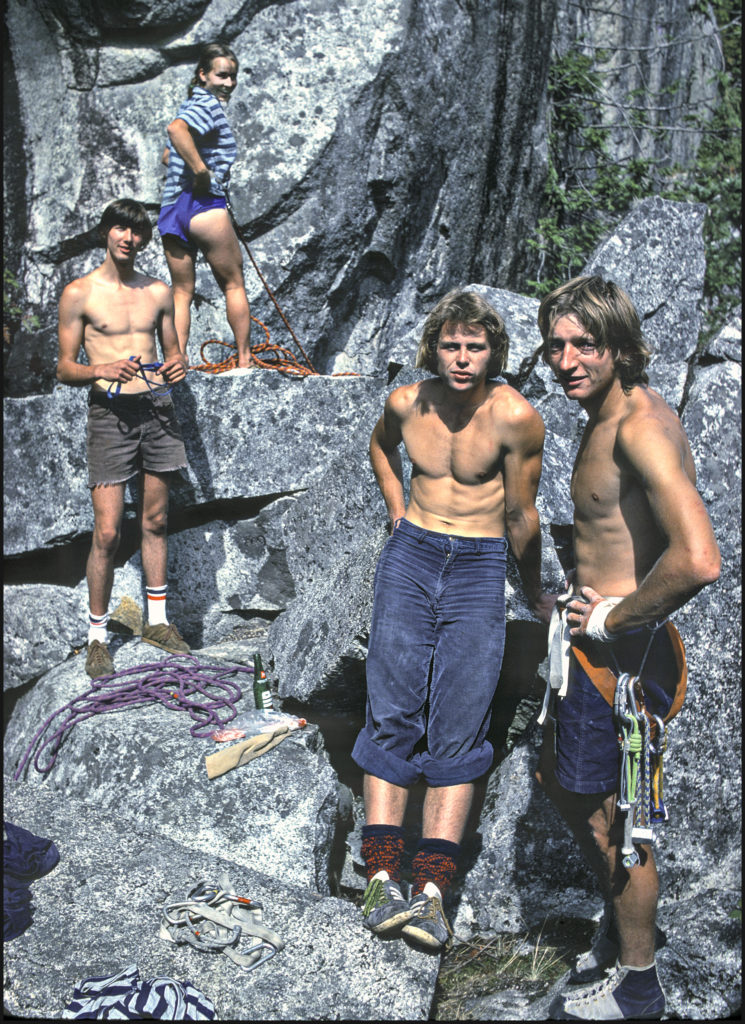 Randy Atkinson, Tammy Knight, Peter Croft, Richard Suddaby, Squamish Chief, Aug, 1979. Photo by Pat Morrow and courtesy of Peter Croft ©
Randy Atkinson, Tammy Knight, Peter Croft, Richard Suddaby, Squamish Chief, Aug, 1979. Photo by Pat Morrow and courtesy of Peter Croft ©
Is there anything that really sticks out from that time?
The biggest breakthrough I ever had was my first 5.10 and it just blew me away! I mean, for the first year of climbing, I never thought I would ever be able to climb 5.10 and when I did it I was just so ecstatic. I fell a ton on the climb but when I finally did it, I got back to the cave I was living in that day and I found that all my stuff had been ripped off. My sleeping bag, pack, stuff that had taken years to save up, all of it was gone and I still couldn’t be bummed.
Do you remember what climb it was?
Oh yah, White Lightning up on the Apron. It was by far the biggest breakthrough I had ever had in climbing. By the time I got into the harder grades, it wasn’t a sound barrier breakthrough like White Lighting. To have a huge psychological breakthrough in whatever you were doing is just monumental.
What was it like for you guys at that time camping and living in the forest?
One of the differences that you can see from now and then is how dirt poor we were climbing. For the first few years, one in ten climbers would have a car and now everyone has a car. Being that kind of poor meant we were sleeping in caves around Psych Ledge (Grand Wall boulders) and then if it rained, we would crawl under the car and sleep.
I was always the weird one who would get up before everyone else and I would pace around waiting for someone to get up and go climbing. We would climb all day on very little food and usually come over for a few days. I would have to just steal stuff from my moms cupboard to eat. By mid-afternoon, we would usually be climbed out and then smoke a bit of dope and go to the bakery.
That was the way of doing things, sort of blowing off climbing mid-afternoon. I remember there was one day where we heading into town and I got my friends to drop me off at the apron to go soloing for my first time. I was climbing easy 5.11 at the time and I decided to go and do a few easy 5.7s on the Apron. That was a big landmark for me. Holy crap! I just did a dozen pitches in a few hours and the experience opened up a whole other world. After that, I would get up early, and if I had no one to climb with, I would end up getting up and going crazy. I really opened things up if I didn’t have a partner.
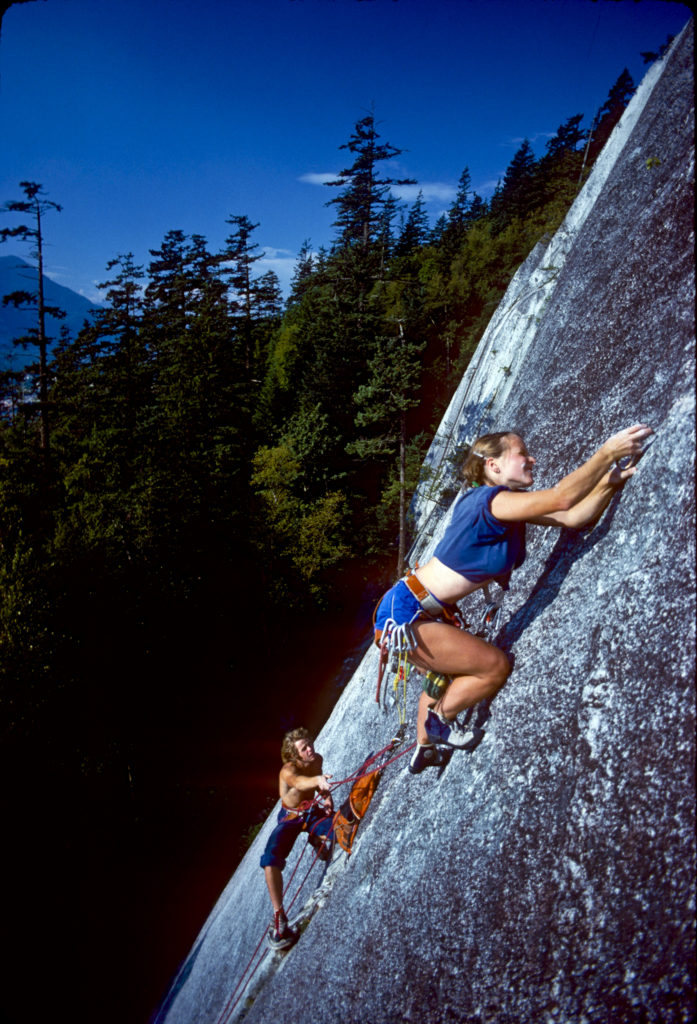
Tami Knight leads Exasperator 5.10c, with partner Peter Croft, Aug. 1979. Photo courtesy of Peter Croft ©
During those initial times soloing, did you feel like you had a head for that or was it a learned experience to control those emotions?
Well, it seemed incredibly fun right away! I mean I was climbing 5.7 that I had done many times before and on stuff that I had dialed. Again, because I didn’t have anyone to compare notes with, it was just what it was. I kept it at a super easy level before I pushed the difficulty. I never felt like I was ever pushing the limits, I just did what felt fun. I never did it to be impressive to other people but just do what would be fun.
In previous interviews, you have talked about soloing being kind of like a dream. Can you tell us a bit about that?
Soloing suits some people and for most climbers it doesn’t suit them at all but anyone who has been climbing for a long time has experienced those times where you get in a rhythm and feel like you belong up there on the rock. So, when you take away the other person with you, it becomes all just you, the feeling you get becomes way more ‘all encompassing’. You become so into the kinesthetic feedback, you are like an animal up on the wall going on instinct. Kind of like that runner’s high or feeling of being in the flow. Soloing by its very nature can just be a lot more powerful in that way.
What is like for you to see young soloists pushing the limits for camera? Do you ever worry for the younger climbers as they blur the lines between the ‘solo’ experience and then soloing for the masses?
I do. For some people who have been around it for a longer time, it feels normal but, for example, when I soloed Astroman, I soloed it a number of times alone. A lot of people ask me if they could film it and I said no. It was just mine. I have been filmed on other things and have had some bad experiences where I am soloing and the camera man drops some rocks on me and…there is the danger side of it, but with soloing in particular, where the stakes are high, doing it for the right reasons, for me, was super important. If you are up there for the wrong reasons and you are pushing it at all, then I think you are blowing it. Its a pretty reasonable thing to say that you should have 100% of your concentration on what your doing when on a hard solo. When there is a film crew there, then you cant have 100% concentration. They are swing around up there trying to get the best shot so if you are at a level where it feels pretty cruise, then you don’t need 100% but anything more…
I think it has become such a normal thing, filming when soloing. I know of close calls with camera men etc. and I think people take it super lightly and people should be careful of it. Obviously, it is going to continue but one of the problems of it is that 20 years ago, if you went out to solo something and did it, no one needed to see it and people would take your word for it. Now, if a tree falls in the forest and wasn’t wearing a go-pro, its not that it didn’t make a sound, it just didn’t happen. Now, it seems like if you don’t film it, there is no proof. There is sponsors now etc. and I would hope that people soloing for the camera be safe and take it seriously
One of the built in safe guards for the soloist if there is no film crew is that you pick your moment. You could hike for a few hours and get up to some big climb and decide that you are not into it. But with the film crew, they may have flew in to get this footage and now you don’t feel like it? There are more pressures to make the wrong decision.
There was one time where this film crew wanted to film me on this 1000 foot clip up in the mountains of the sierras and they were like ‘Peter, you gotta be on time’! So I said “Don’t worry about it, I’ll be on times’. So, I get up there early in the morning and they are still having breakfast and they are taking a long time. We are planning on filming this west face and I want to make sure that it is not in the sun. They crew ended up not being ready and I am waiting in this white rock talus field in sun and I’m starting to feel woozy. Like an idiot, I actually went for it. I didn’t come close to slipping off but about 400 feet up I decided we were going down. It was not good what they did and it was also really stupid what I did. The pressure of that experience obviously lead to some unusual choices.
Often, when you talk about Squamish, ascents of The Shadow and University Wall always come up. Are there any other experiences that stick out in Squamish as a special moment for you?
University wall was huge! Doing that with Greg (Foweraker) and Hamish (Fraser) was such a bigger moment for me than doing The Shadow. For us, it was just a whole other level that we didn’t even know if we should go there. In contrast, The Shadow was done on a lark and it worked out. University Wall was a more of a drawn out thing. At that time, Astroman was a super rad route, cutting edge, and when I first did that with a rope, I came back to University Wall and thought it wasn’t going to be a big deal but it was just as horrendous as ever! When we did it, we knew there was going to be harder lines in Squamish but not one that looked like that!

Peter on The Shadow (5.13b). Photo by Kevin Mclane and courtesy of Peter Croft ©
Were you guys sieging the route over a couple weeks or..?
Because the first few pitches were the crux, we worked on that for a while. We would go up there and fall off and we were so scared of the exposure, so clutched up, it would take us days and days to summon up the courage to go back up sometimes. The technical difficulty was one thing, but it was being freaked out about what we were trying to do.
Have you gone back and tried to repeat it?
No, usually when I go back to Squamish it is for a short time and just connecting with friends. This trip I am trying to have enough hang to do a bit more serious climbing.
The Smoke Bluffs and Petrifying Wall have always been defining walls when growing as a climber in Squamish. Sounds like the University Wall was that for you but did the Smoke Bluffs or Pet Wall play any role in your time in Squamish?
When we started in Squamish, there was nothing in the Smoke Bluffs other than Split Beaver and we couldn’t touch that. Pet Wall really wasn’t happening at all. There was some stuff at Murrin, with Brunser Overhang. At the time, the cracks that were 5.10 were too hard for us so we would often go slab climbing. Our slab climbing might be hard 5.10 and then crack climbing at 5.8.
So you guys are hanging in Squamish and having a great time. What drew you out to the Waddington Range and Yosemite?
The Waddington trip happened before I moved to California but starting from way before then, when myself and Greg and Hamish were making regular trips to Yosemite. It was a pretty spontaneous thing to go to Waddington. I remember talking to Greg and he thought it would be cool to traverse the Waddington Range. I ended up having plans to try the traverse separately with Don Serl and Greg (at the same time) so I called up Don and said ‘ Look, sorry, I am an asshole but I am really sorry, I have also made plans with Greg and he is my best friend.’ Well, Don was great about it and we ended up doing the trip together and really had the time of our lives!
You talk in a Mountain Life article that on the third day, you had one of the scariest rappels you have ever experienced?
Three quarters of the way through everything was going great and we wake up on the third or fourth day and Greg is puking all over the place and we don’t have a radio or any way to contact someone. So, that is how the day starts and we are thinking ‘how do we get this guy out of here?’ A few hours later, he was feeling better so we decided to continue. We end up traversing this snow face when a piece of ice comes down from above, cartwheeling through the air and clips Don in the shoulder. He almost flipped over backwards going for this huge ride, so we hung out while he recovered. So then, we end up reaching Sera 5 and we go up to the top after some steep rock climbing but as we start defending the other side, which looks like half the mountain had slide off. It looked as though in the previous year or two half the mountain had slid off It was the worst rock I have ever had to descended!
I was leading the rappels with a full pack on with overnight gear etc. I am rappelling this one section, and I never knotted the ends of the ropes in those days. Everything is so incredibly loose and I swing off and find this crack and start to hammer in a few pins. I give it one more whack and there is this huge high pitched whining sound and all these little cracks start shooting off in all directions. I kick off and pendulum in a huge way, slamming into this corner with my shoulder and my left side goes numb, the same side as my break hand. I lose control of the rope and I am sliding to the end of the rope. Before I hit the end of the rope, I realize I need to get my other hand on the rope and I barely stop myself before flying off the end. I am finally at the last edge and I put in some anchors. It feels pretty good so I tell the guys to come down. A few rocks start falling and the guys yelled that there are some big rocks to come down. These blocks come down and they are the size of TV sets! They are so close I can feel the wind of them as they whip by. I yell up ‘When are the big ones coming down?” and the guys yell back ‘They’re are coming right now!” The next ones were the size of a small refrigerator so I suck into the rock as small as I can and they are sucking the wind around me coming down.
You guys must have been shattered and that point!
Yah, well, we had time to keep climbing further and I told them ‘I can’t go anywhere. Im done”. So much nervous energy. There was this moraine slope and I just keep hacking it to carve out this bivy spot. The next day was just this classic blue sky day. What a trip.
You talk of moving back and forth between Yosemite and Squamish. Was there something more free about going to Yosemite and escaping Squamish?
I guess, the biggest part of it when we were first going down there, it wasn’t like Yosemite might be the best climbing area in the world! There was nothing even in second place. Whether you lived in Japan or Germany, it was the place.
Did your experiences in Squamish up until then prepare you for Yosemite?
John Bachar and Ron Kauk, those were the big guys down there and they had a forcefield around them. Certainly some of the Squamish guys tried to buddy up to those guys but I just steered clear from them. I didn’t really want to do the groupie thing but also those guys were bigger than rock stars for me. For the first bunch of years, I had very little interchange with the locals and mostly hung out with my Canadian buddies.
We would go get slashed all day on a couple of 5.10’s and some off-widths. The off width thing! That really blew us away. In Yosemite, it seemed like wherever we went we could get through the finger crack but then just get shut down by these off-widths on the second pitch.
How did you handle the competition between climbers at your level?
There really wasn’t any competition. We would throw ourselves at things and cut up our hands and stuff. Most people have some sort of competitive urges but for me it never brought out the best of me. All the best stuff I had ever done in climbing had nothing to do with competition. I just thought it was a really cool thing to do. kind like an inspirational thing rather than I want to beat that other guy or show him up or whatever. I just look back on all the best climbing that I have done. I cant think of a one that came down to competition.
Squamish has always been such a small community and controversies around routes and ownershipof routes. Was that around when you guys were coming up?
For the first while, no, but after we had travelled some and we were getting better there was definitely some of that. Part of that was because different people had different ways of going things. For one thing, rap bolting at one time was considered weird and there was other people who would find something and then immediately fix ropes on things. They would sometimes leave these ropes for years maybe and nobody could touch it. So, there was weird stuff like that. And in all of us, we were teenagers and all did stupid stuff and got agro when we should have just laughed it off. We did some stupid stuff but we learned from it.
Did it have an impact on the community at the time?
It did kind of divide the climbers a bit. Some people took themselves really seriously and some of were not nearly as reverent. Basically, we decided you should throw yourself at climbing as hard as you can and you shouldn’t take yourself too seriously. We were little snots sometimes, making fun of them, because it was just what we did. It did get divided for sure. I remember one time, I was over at Murrin Park on the Milkman Wall and a couple of the guys, who were not in our group, came up and started yelling at me about some stuff that we had done and I said ‘You guys, this isn’t the time, we should take this up when I am on the ground!’ and they just kept on yelling! Basically, you throw a bunch of jacked up teenagers into a room and they are not agree on everything.

Every now and then in Squamish, we have had a couple situations where we can’t agree on who owns a route and reflecting on this things, it does divide our community a little bit.
It is always going to be an issue and an issue that there is not going to be consensus on. Particular in a place like Squamish, preparing a route to be climbed and finding it, you hiked all over the place and the amount of cleaning that goes on! New routes take a lot of cleaning sometimes and I have had a lot of people over the years that say ‘you know Peter, I have been working on this project for a long time, you should do it’. and I always say ‘No way, you put all that work into it. I can hike around and find my own projects. You keep at it.’
People often use the excuse that no one owns the rock. Sure, no one owns the rock, but go find your own project. If somebody has put in all this effort and now you are going to take advantage of that under the guise of ‘I think we should be just free to do what we want’. I think respecting other peoples efforts should weight pretty heavily in all of that. There is tons of rock, go find your own project.
So, placing value on the time people put into development and making sure their efforts are celebrated by the community in some sense.
I know how much work it is to put up new routes so that is why I don’t want to take it off someone else. I really appreciate the time and effort people put into these things. I think that should really be respected.
Thanks again for answering all our questions Peter! I guess this isn’t your first time back in Squamish for the festival but what do you look forward to for the festival and what is it like coming back to squeamish after all those years?
Being in the midst of masses of people isn’t usually my thing, but I think it always fun to meet new people through climbing. Climbing is now more diverse than when I started and it is so cool that in a way, climbing has never really been a sport for me but more like a life adventure and I think it is just great! So, to meet people who are just getting into it or really getting after it, it is a really big kick. As far as coming back to Squamish, the times in the past have always been for a shorter trip so this time I want to get in some more climbing and stick around for more that just a few days.
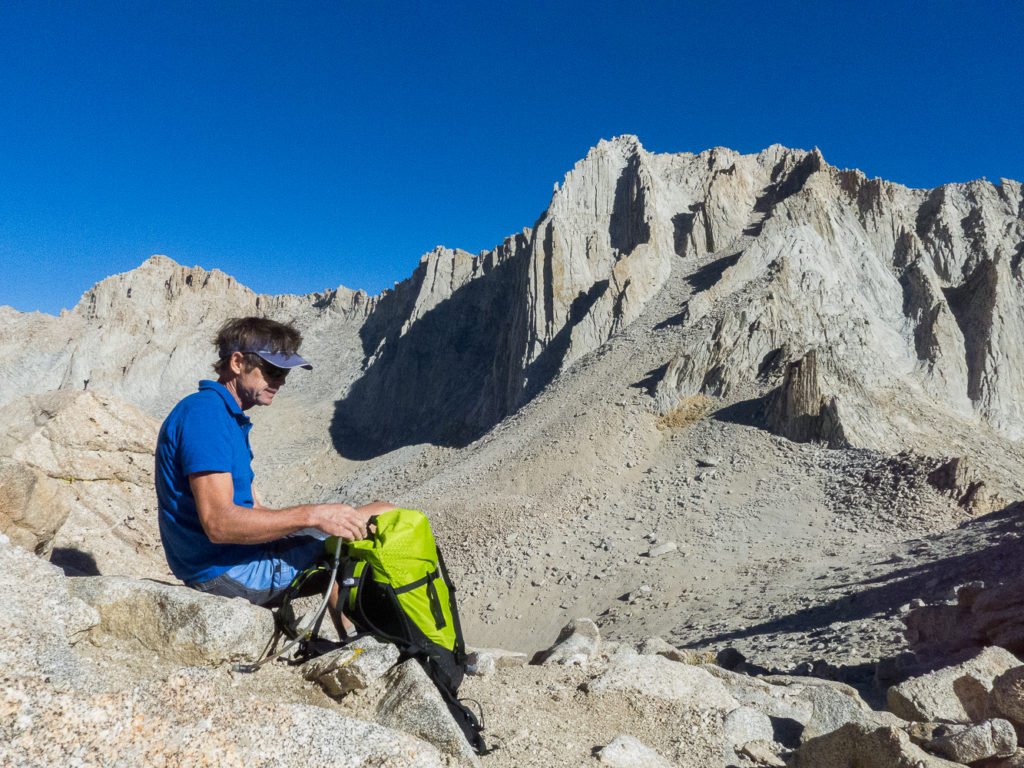
Photo courtesy of Peter Croft ©
Thanks again, Peter! I hope you have a fantastic time in Squamish and we can wait to here what you have to say on Thursday!
For more information how to be a part of the festival and catch Peter speaking in Squamish, please go to the Arc’teryx Climbing Academy website. Peter Croft will be speaking Thursday night, July 14, 2016, at downtown’s O’Siem Pavilion Park and then he will be teaching an ‘Efficient Climbing’ course on Saturday, July 16, 2016 (registration only).











